Space
Sign up for our newsletter
We summarize the week's scientific breakthroughs every Thursday.
-
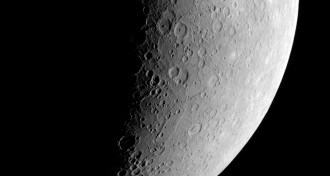 Planetary Science
Planetary ScienceMercury is more shriveled than originally thought
Like a week-old party balloon, Mercury has shrunk over the last 4.6 billion years.
-
 Astronomy
AstronomyMature galaxies found in young universe
Inactive galaxies the size of the Milky Way found dating to when the universe was just 1.5 billion years old.
-
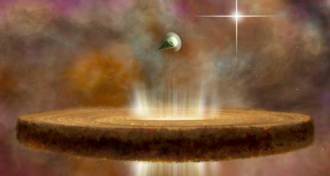 Astronomy
AstronomyBehemoth star destroys potential solar systems
A massive star in the Orion Nebula is evaporating disks surrounding young stars in its neighborhood but some disks mysteriously manage to survive.
-
 Planetary Science
Planetary ScienceFeedback
Readers respond to a special report on neuroscience and discuss moon dust.
-
 Cosmology
CosmologyGravitational wave detection a big day for the Big Bang
On a snowy St. Patrick’s Day, our offices officially shut down by a late-winter storm, the Science News staff was abuzz over the biggest thing since the Higgs boson. On March 17, scientists announced the first direct evidence of the theory of cosmic inflation: primordial gravitational waves.
By Eva Emerson -
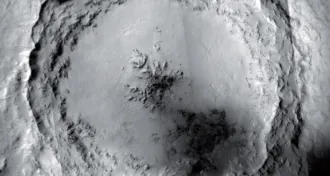 Planetary Science
Planetary ScienceMojave Crater may be source of many Martian meteorites
Many of the roughly 150 Martian meteorites found on Earth probably came from the Mojave Crater on Mars.
-
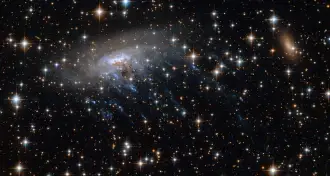 Astronomy
AstronomyGalaxy drags trail of stars behind it
A Hubble Space Telescope image shows the galaxy ESO 137-001 dragging star trails behind it as it plows through the Norma galaxy cluster.
-
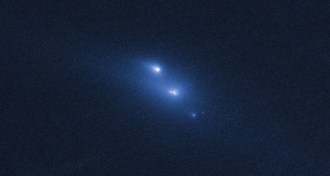 Planetary Science
Planetary ScienceAsteroid disintegrates while spinning too fast
Asteroid P/2013 R3 is shattering into a cloud of debris in these images captured by the Hubble Space Telescope.
-
 Astronomy
AstronomyComets collide around young star
Astronomers detect clouds of carbon monoxide around Beta Pictoris that could help lead to the discovery of new planets.
-
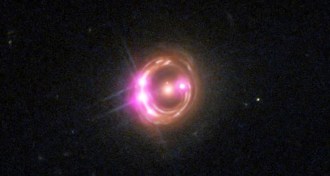 Astronomy
AstronomyCosmic lens exposes spin of supermassive black hole
A chance alignment of a bright, distant galaxy behind a much closer one has given astronomers a rare opportunity to determine the spin of a supermassive black hole 6 billion light-years from Earth.
-
 Astronomy
AstronomyBlack holes may shut down stellar factories
Astronomers find dead galaxies loaded with the cold gas needed to make stars.
-
 Astronomy
AstronomyNASA releases 2015 budget with some mission cuts
NASA $17.5 billion budget for fiscal year 2015 supports big missions, such as the James Webb Space Telescope. But there are plans to put the SOFIA telescope in storage.